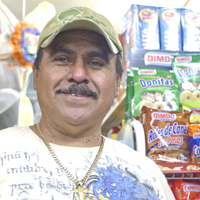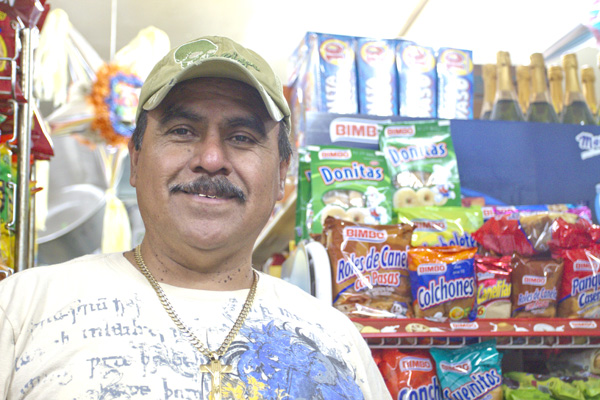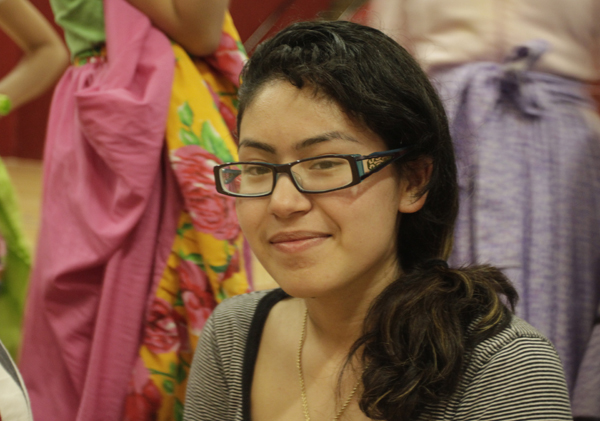
Rebel Diaz's Rodrigo and Gonzalo Venegas sell their music online
By Manuel Rueda
Gonzalo Venegas and his brother Rodrigo have been rapping about social inequalities since the 1990s.
Based in the south Bronx—the cradle of the hip-hop movement—the two brothers use the Internet to share their work with fans across the world.
Known in hip-hop circles as the Rebel Diaz duo, the Venegas brothers blend hip-hop and Latin rhythms in songs about inner city youth, corrupt government and the problems faced by recently arrived immigrants.
The sons of political refugees from Chile, their songs are often bilingual, with lyrics in English followed by a chorus in Spanish or an English verse punctuated by Chilean slang.
The name Rebel Diaz is a take on the Spanish word for rebels, rebeldes.
Raised in Chicago, the Venegas brothers have created an online community—and built a fanbase— using the most common web tools of the modern age: Facebook, Twitter and their own web site.
On their Twitter account, they update their 1,500 followers about their upcoming concerts and share small snippets of their lives. Last Thursday, for example, the brothers informed followers they were watching their Chicago Bulls “put the bats” on Boston.
On Facebook, the duo will occasionally share articles on civil rights protests with their politically conscious fans.
But in other ways the Venegas are anything but typical web musicians.
Rebel Diaz does not promote its work on digital stores like iTunes. Despite being relatively well known in hip-hop circles, the duo doesn’t do deals with record labels to market their music on the web.

Albums go for $10 on the Rebel Diaz site
“If we wanted to take a route to give us mass exposure we would,” says 26-year-old Gonzalo. “But you have to remember, those labels are controlled by corporate interests that don’t want to hear the type of message that we’re putting forth.”
Instead, Rebel Diaz sells its material exclusively through its website, with tracks going for $1 and an album for $10.
And unlike online retailers like iTunes or Amazon that only provide short previews of the songs they sell online, Rebel Diaz lets you listen to the whole track for free. You only need to pay if you want to download the song or the album into your computer.
“Our experience as producers of music and consumers is that if people want to buy your music, it doesn’t matter if they listen to three seconds or one minute,” says Gonzalo Venegas, who goes by the artistic name, G1.
The younger of the two brothers, G1 explains that the group makes most of its sales “hand to hand” after their concerts. He believes that most of those buying Rebel Diaz’s records online are people who were not able to get their hands on a CD after one of their shows.
“Most people aren’t really hearing our music on our website. They’ll hear it on Democracy Now (a radio news show) or a friend will tell them about it, and at that point they’ll go to the site,” he says.
The band’s web presence helps the duo promote itself and sell albums, but the brothers make no secret about the fact that they rely on live performances to make a living. Last year, the duo rapped at 100 shows. And in May, it kicks off a month-long European tour that will take it to Germany, Greece and the United Kingdom.
For some extra income and to give back to the community, the Venegas brothers hold workshops on the history of hip-hop for students and youth groups in low-income neighborhoods.
“Even though the Internet is very important to us as a tool. It’s not the be all and the end all,” says G1. “The person to person contact, is probably the most important thing that we do.”
One of the group’s recent videos
Click here for more stories on the Digital Bronx.


















![[Video] An Easter tradition thrives in Tremont](http://bronxink.org/wp-content/themes/gazette/functions/thumb.php?src=wp-content/blogs.dir/3/files/2011/04/000_0072_01.jpg&w=100&h=57&zc=1&q=90)


